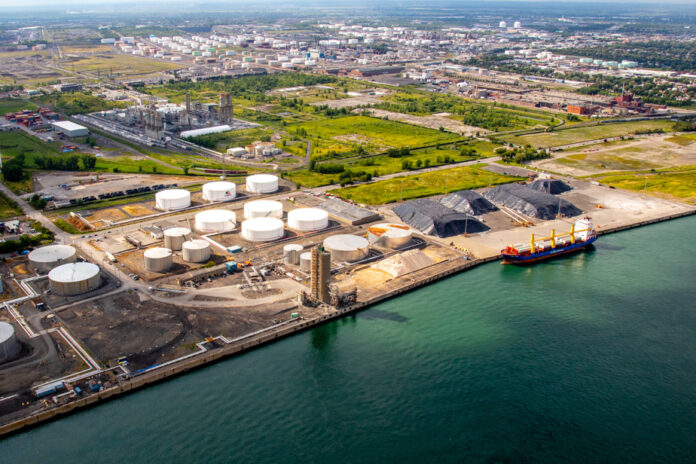Could you enlighten me? Why do we have to pay to decontaminate land that belongs or belonged to big oil companies that make huge profits? However, there are laws regarding the liability of polluters. – René Cyr, Repentigny
Several readers reacted to our article published on Tuesday, November 14, on the creation by Quebec at a cost of 100 million of the Société de mise envaluation des terrains en l’est de Montréal to acquire, decontaminate and resell contaminated industrial land. Fondaction will manage it.
The new organization’s first efforts will be focused on the immense land of at least 650,000 square meters, owned by the oil company Esso, located in Montreal East. Due to its size and its location between Sherbrooke and Notre-Dame streets, its revitalization is essential to the redevelopment of the eastern part of the territory.
“Esso was not required to rehabilitate its land because the facilities were dismantled before the Environmental Quality Act (LQE) came into force in 2003,” responds Linda Soh, analyst, by email. in communications at the City of Montreal-East.
“This is not the case for Shell [closing its refinery in 2010], she continues. During the dismantling of the former Shell refinery in Montreal East, the land had to be the subject of a rehabilitation plan under the EQA, since the dismantling was carried out after 2003.”
Environmental law is relatively young in Quebec. The first efforts date back to 1972 with the first version of the Environmental Quality Act (EQA), which at the time did not include any provision on contaminated land, indicates the essay prepared by Stefanie Wlodarczyk in January 2021, entitled Evaluation of the legal regime governing contaminated land, as part of his master’s studies in environment at the University of Sherbrooke.
The rehabilitation of contaminated soils was the subject of a first policy in 1988, but it is non-binding.
The polluter pays principle appears in Bill 65, sanctioned on June 22, 1990. It constitutes a first effort aimed at integrating rules on contaminated soil into the EQA. “The success is mixed: the majority of the articles of the bill will never be proclaimed in force,” wrote Me Jean Piette in 2015 during a conference entitled “The modernization of the environmental authorization regime”.
The contaminated soil rehabilitation policy was modernized in 1998, but the approach adopted in this second policy remains based on flexibility, “adherence being based on voluntary participation, in accordance with the preferred approach of that time”, underlines Ms. Wlodarczyk in his essay.
We had to wait for Bill 72, presented in December 2001 and adopted in the spring of 2002, to see the Quebec government give itself the power to force the polluter to decontaminate his property. At the same time, the government adopted a series of binding regulations regarding the management of contaminated land after the entry into force of PL 72 on March 1, 2003.
“Section 31.43 empowers the Minister to order the development of a rehabilitation plan and an implementation schedule in respect of land. This provision gives broad powers to the minister and allows him to demand the rehabilitation of land,” gives Stefanie Wlodarczyk as an example.















